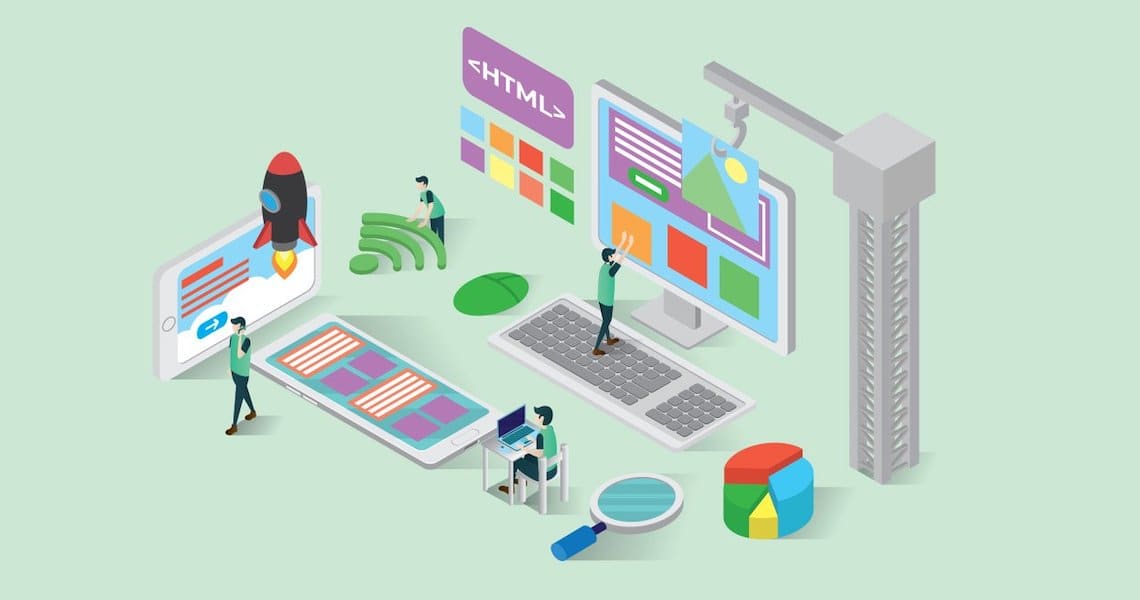
Have you been wondering how to create your own app? Maybe you recently had an idea for a new game or tech solution and thought it would be cool to share it with the world?
More and more people have been creating and launching mobile apps, contributing to nearly 2.5 million available apps in the Google Play Store, and close to 2 million available in the Apple App Store, based on recent statistics.
But the entire process, from idea to launch, can seem complicated and intimidating. How do you begin? What’s the app development cost? Should you use no code or learn to code apps? For starters, it is a good idea to choose which of the application stores you want to build an app for before you begin. Apple’s App Store is the most attractive, especially if you want to earn from your app. That’s because Apple has more customers who are willing to pay for your app. If you have the ambition of learning how to create an app, you should probably think about the iOS route.
Either way, stick around for all the important steps.
1. How to create your own app without having ideas first?
Before you can get started creating your own app, you need ideas. If you already have an idea for your app, you can move on to the next step. If not, you will have to do some brainstorming. For the latter, pay attention to your surroundings and the tools you use daily. Are there any problems you face when trying to get simple tasks done? Pay attention to your interactions, both online and offline, to identify gaps that an app may be able to fill.
2. Flesh out your ideas
Once you have several ideas, the next step is to write them down to see how feasible they are and to narrow down which one is the best to turn into an app. Make a list of attributes for each idea and the respective problems they will address. You can even do a survey that includes the issues addressed by each idea to see the level of responses as it relates to each solution. The option that generates the most feedback will likely be the idea you should work on.
3. Find out what exists
Before moving forward with creating your own app, you should research if something similar already exists. The last thing you want to do is spend time and money building an app, only to find out there is a solution already available (or in an advanced state of development) that does pretty much the same thing. On the other hand, finding a similar app does not necessarily mean you have to scrap your idea. Instead, you may just need to tweak yours so it offers something valuable that is lacking in the existing app.
4. How to create your own app now? Start with a wireframe…
Now that you have a solid idea, it is time to start giving it a basic frame or skeleton and map out the basics of how your app will work. This is done by creating what is called a wireframe, which is a visual sketch of the app to show how it will be laid out and how it will flow. How will users get from point A to B using the app? What core features will it have and what goal will be accomplished? (As a general rule, your app should focus on fixing just one problem.) You may create your wireframe in a very simple manner using pen and paper. However, there are more sophisticated wireframing options available online. Tools you can use to create a wireframe include:
- Balsamiq Mockups
- MockPlus
5. Prototyping Software
The next step is to create a prototype of your app to test how the different steps work together. Prototyping allows you to gather all the sketches from your wireframe and link them together in a logical flow. At this stage, you will be able to see your idea in action and get validation as to whether it will be of value to users or if you need to scrap the idea all together. There are several prototyping tools you can use to help get a basic feel of what your app will look like and how people will actually use it. For iOS app building, for example, you can use Kodika, a no code app building tool, which can make the next steps in designing your app even easier (more on this in step 9). Other popular prototyping tools are:
- InVision
- Axure RP
- UXPin
6. Test, test, test
Once you have your prototype all set, you can share it with project members or consumer testers to get feedback on ease of use and app flow. There are several things you need to verify during this prototype testing phase to determine if you are on the right path. Is the menu accessible after opening the app? Is it easy to identify all the things the app can do? What is the easiest path to achieving an outcome? Is there an option/feature that could be added? Is an option/feature necessary? Are there redundant paths or unnecessary steps?
7. Revise
Revision is an important next step when learning how to create your own app. From the feedback in the testing phase, you can make revisions to further perfect the flow and usability of your app. Head back to your wireframe and implement all the necessary changes. Then create another prototype and test it again. Repeat the revision and testing process until the flow is seamless, functionality clear, and usability on point.
8. Time to develop your App
You have gone through all the necessary iterations of testing your app and found that it is an idea that has real potential to create value and make a difference in the world. Now it’s time to develop your app. At this step, you want to be thinking about which app platform you want to create for. As mentioned earlier, iOS is a better choice if you want to monetize your app in the future. Studies show that consumer app spend for Google Play was 34% in 2017 while it was 66% for Apple’s App Store.
You want to also think about your budget relating to app development cost, and which app building pathway you should choose, i.e. coding or learn to code apps.
9. How to create your own app? Code or NoCode?
The traditional way of building an app is to write many lines of code. While this is desirable to have full control over the design capabilities and functionality of the app, it will cost more time and money. Depending on the complexity of your app, it can take up to six months or over a year and cost up to 50,000 euros or more to successfully code a native app.
On the other hand, you can choose a no code mobile app building platform which will allow you to quickly design and develop your app, sometimes in hours and for as little as 200 – 300 euros. Kodika was mentioned back in step 5, and for good reason.
As a no code tool, Kodika makes it possible to design just once. You can do the prototyping by connecting the screens from your wireframe, then connect the design to live data, making it possible to have your app ready for the App Store in no time. There are other no code app building tools you can check out but as a no code app builder for iOS apps, Kodika represents a unique opportunity for anyone to create worthwhile iOS apps in quick time without a huge upfront cost.
10. Build your App
Having decided the path to take, it is now time to build your app. You will still need to test your app live before launching it but you are now well on your way to creating your own app.
App development has spread far and wide as more people from all walks of life gain access to tools and resources such as no-code and learn to code apps. By following the above steps, you can learn how to create your own app in no time. With that said, good luck!
